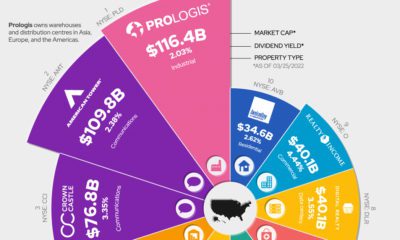Here’s 48 Hedge Fund Terms Every Investor Should Know
For many investors, hedge funds appear to be shrouded in mystery. There’s a practical reason for this. The best hedge funds are extremely careful about protecting their ideas and tactics, because they provide an important competitive advantage for making profits. An example that illustrates the paranoia around this was described in Flash Boys by Michael Lewis, where he noted that at the ultra-secretive firm Citadel, it took five ID card swipes for an employee to simply start her day. There’s also a psychological reason for the secrecy – which is that hedge funds want to appear incredibly complex and sophisticated, so that accredited investors will part with their money in order to get exposure to them. While hedge fund tactics are often intricate and extremely lucrative, understanding how they work is not as impenetrable as it may seem.
Hedge Fund Terms Investors Should Know
Today’s infographic comes to use from StocksToTrade, and it captures 48 terms that can serve as an entry point for any investor into the mysterious world of hedge funds. It covers essential ideas around how hedge funds make their bets, such as: arbitrage, hedging, pairs trading, alpha, and beta. The infographic also looks at hedge fund terms around measuring performance and risk, as well as words that describe fee structures and payouts. Interestingly enough, we live during a time when modern technology has also allowed retail investors more access to these types of tactics than ever before. Take a look at this infographic on alternative investments, which gives examples of ETFs and mutual funds that mimic traditional hedge fund strategies such as long/short equity, merger arbitrage, or managed futures. Want to learn more about how hedge funds work? This post on WallStreetMojo outlines nine popular hedge fund strategies, or check out our favorite book on global macro investing: Inside the House of Money by Steven Drobny.
on Last year, stock and bond returns tumbled after the Federal Reserve hiked interest rates at the fastest speed in 40 years. It was the first time in decades that both asset classes posted negative annual investment returns in tandem. Over four decades, this has happened 2.4% of the time across any 12-month rolling period. To look at how various stock and bond asset allocations have performed over history—and their broader correlations—the above graphic charts their best, worst, and average returns, using data from Vanguard.
How Has Asset Allocation Impacted Returns?
Based on data between 1926 and 2019, the table below looks at the spectrum of market returns of different asset allocations:
We can see that a portfolio made entirely of stocks returned 10.3% on average, the highest across all asset allocations. Of course, this came with wider return variance, hitting an annual low of -43% and a high of 54%.
A traditional 60/40 portfolio—which has lost its luster in recent years as low interest rates have led to lower bond returns—saw an average historical return of 8.8%. As interest rates have climbed in recent years, this may widen its appeal once again as bond returns may rise.
Meanwhile, a 100% bond portfolio averaged 5.3% in annual returns over the period. Bonds typically serve as a hedge against portfolio losses thanks to their typically negative historical correlation to stocks.
A Closer Look at Historical Correlations
To understand how 2022 was an outlier in terms of asset correlations we can look at the graphic below:
The last time stocks and bonds moved together in a negative direction was in 1969. At the time, inflation was accelerating and the Fed was hiking interest rates to cool rising costs. In fact, historically, when inflation surges, stocks and bonds have often moved in similar directions. Underscoring this divergence is real interest rate volatility. When real interest rates are a driving force in the market, as we have seen in the last year, it hurts both stock and bond returns. This is because higher interest rates can reduce the future cash flows of these investments. Adding another layer is the level of risk appetite among investors. When the economic outlook is uncertain and interest rate volatility is high, investors are more likely to take risk off their portfolios and demand higher returns for taking on higher risk. This can push down equity and bond prices. On the other hand, if the economic outlook is positive, investors may be willing to take on more risk, in turn potentially boosting equity prices.
Current Investment Returns in Context
Today, financial markets are seeing sharp swings as the ripple effects of higher interest rates are sinking in. For investors, historical data provides insight on long-term asset allocation trends. Over the last century, cycles of high interest rates have come and gone. Both equity and bond investment returns have been resilient for investors who stay the course.














